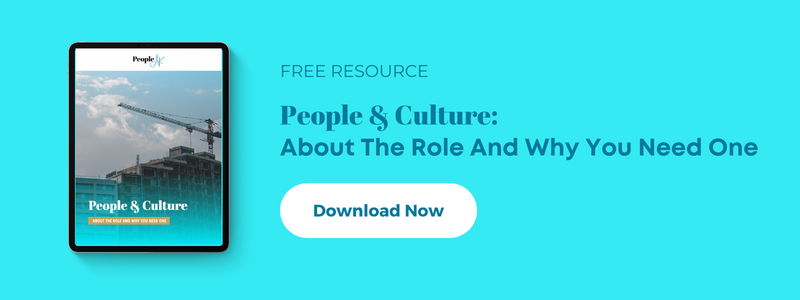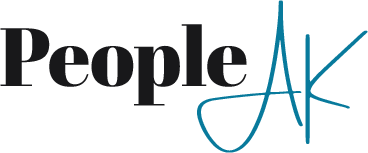The past few years have radically changed workplaces. While some are still lagging in their efforts to keep pace in a changing world, many organizations have taken the wave in good stride and adapted to the trends.
Traditionally, the HR department was mainly involved in logistics around hiring, assisting with employee benefits, and mediating disagreements. However, their role is transforming to meet workforce demands at an alarming rate. This can primarily be attributed to global systemic changes following the COVID-19 pandemic.
While some of these trends may neither be suitable nor applicable to your business needs, others could be the lifeline between your survival as an enterprise and overall success going forward. Here are a few human resource trends and how your organization can maximize these changes.
Creative Solutions to Staff Retention and Recruitment
Normally, you wouldn’t expect workers to resign in the wake of a recession and tough economic times. This was the case in the months following the pandemic as job quit rates fell to a seven-year low of 1.6%. However, as COVID persisted, employers began to witness a sustained mass exodus from workers seeking to grasp a concept of work-life balance.
As a result, in the wake of The Great Resignation, a term coined by Professor Anthony Klotz, it’s more important than ever to find and retain quality talent.
While the Big Quit was mostly attributed to Millennials and Gen Z, older workers also left their workplaces in greater numbers. This ongoing en masse resignation has been a menace to HR everywhere, calling for a more creative and proactive approach to staff retention and recruitment.
Improve Employee Benefits
One place to start would be finding ways to fine-tune the bread and butter of the HR department – employee benefits. Employers who offer more enticing benefits and competitive pay adjustments are better positioned to retain the existing workforce and put a good word out that will attract more talent.
We aren’t talking about commuter benefits and free lunches. While that used to work in the pre-pandemic era, the modern worker who opts to work from home won’t fall for that.
When discussing employee benefits, think of job perks like home office credits, wellness programs, and enhanced healthcare offerings. If you operate on a global scale, you can employ inclusive policies by offering workers with unconventional schedules more thoughtful vacation options.
But it’s not only about the kind of benefits forwarded to employees; the ‘how’ also matters. More on this as we dive into technology for HR.
Lean on Temporary Staff
While perks and benefits may go a long way to cultivate loyalty from your workers, it is vital to have a Plan B for times when you experience worker shortages. The HR team can incorporate a stand-by team of temporary workers to fill any gaps for specific projects, reorganize staff structure, or recruit for a long-term position. Remember, the key to being resilient in the face of massive change is to adopt a supple and agile mindset that is always prepared for the unseen.
More Focus on Company Culture
Let’s pretend that Friday used to be Game Day in your organization. Everyone yearned and longed for these competitions that would pitch workers against one another while also creating teams. But now, 75% of your workforce has shifted to remote working conditions. How can your HR officials mitigate this challenge and promote company culture for increased loyalty and engagement?
Making changes to your established in-office culture has been tough for most employers in the post-COVID era, but some have found interesting ways of rising to the challenge.
Promote Clear Communication
While there may not be a one-size-fits-all solution to answer this, there is a trick that may go a long way to help build camaraderie, engage employees, and maintain company culture – clear lines of communication.
HR should strike a balance between communication and over-communication. After all, experts now attribute Zoom burnout to increased levels of lower productivity among workers. Find a common purpose when organizing hangouts and virtual meetings. Conduct surveys on employees’ interests and take appropriate steps from such polls. Increase internal communication while taking care not to promote online meeting fatigue.
Put differently, encourage inclusivity measures by engaging employees without micromanaging them.
Explore People and Culture Roles
This new era has transformed HR as more companies move away from the traditional procedural and paperwork Human Resource-based departments to more modern People and Culture roles. While People and Culture differs from traditional HR, these two have a lot of crossovers and often work in tandem.
People and Culture encapsulate employee engagement and culture infusion from the point of hiring, meaning managing people will be people-based rather than policy-based. According to talent acquisition professionals, the employer’s culture is a critical consideration for job seekers who may choose one job over another due to culture.
Leverage Technology
Employers’ outlook on technology has tremendously changed with COVID jump-starting the incredible shift to remote solutions, a trend that will gain momentum as we advance. Employers need a tech-first approach to appeal to the modern and tech-savvy younger generation.
Leveraging the right technology goes beyond purchasing HR software to improve efficiency. Some organizations digitized the onboarding and screening processes, a trend that will become commonplace in 2023 and beyond. Adopting cloud software and AI solutions to automate and manage workflows will optimize the hiring process for employees and employers alike.
Another process that may need a touch of technology is how HR rolls out employee benefits, where some employers still rely on pen and paper. The workplace of the future calls for digital benefits administration where employees can quickly assess how much a benefit costs and compare them with other paychecks in real time. Such a system should not be limited to the workplace desktop but should be integrated into phones and other devices, allowing employees to share that experience with their loved ones.
In addition to that, with more information going digital, HR and workers in remote environments need upskilling and training on the new technology as well as safety measures when operating online.
Shift Company Policies to Meet Changing Compliance Requirements
When all is said and done, the macro environment substantially impacts any organization’s operations and processes. This is especially the case when it comes to changing laws, regulations, and guidelines surrounding any industry. Employers must be nimble and quick enough to adjust to the evolving laws and regulations. This sometimes calls for revisiting the employee handbook or revising the existing hiring process. Failure to align with rules pertaining to leave benefits, workplace harassment, and drug testing has landed many employers in trouble.
Many states are now adopting pay transparency laws, thus calling for more accountability from the HR departments. States such as NY, Cincinnati, Maryland, Colorado, and Washington require employers to disclose the salary range in job listings. On the other hand, California specifies that businesses of a specified size ought to report aggregate pay data to the state’s labor department.
Another hot topic for HR is the increased legalization of marijuana usage. By the end of 2022, 19 states have legalized the recreational use of marijuana, while 38 have only allowed medical usage. It presents a challenge for employers who emphasize a drug-free policy. This means the HR should stay current on state and local regulations surrounding marijuana use. Since recreational use varies by state, HR may also need to assess how it affects working conditions and drug testing requirements, especially when hiring.
Assemble your A-Team with People AK
Whatever the case, hiring and retaining workers is an ongoing journey that calls for diligence and a sound strategy while employing empathy for the people involved. That has not been an easy journey for most businesses in the post-pandemic phase. Many enterprises have had to outsource extra help in acquiring the right talent, which is where we come in.
At PeopleAK, we have perfected the art of people and talent with a track record of successful scouting, recruiting, and staffing. We not only help you find the right fit for your team but also provide temporary staffing to augment your team in the event of a shortage. Additionally, we offer strengths-based coaching and strategic planning to help your business leap to the next level.
Ready to bring out the best in your people and business? Get in touch.


